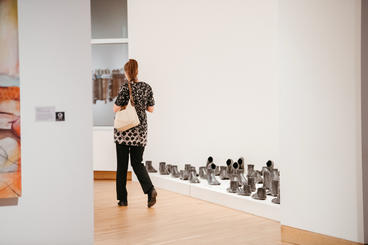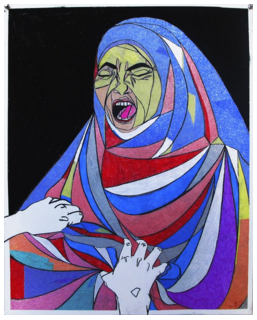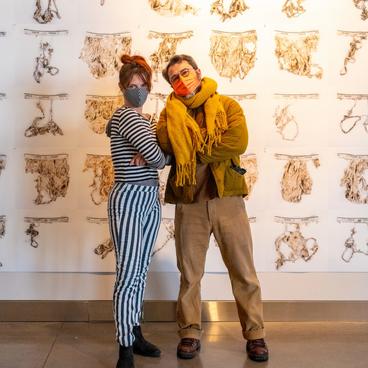Trigger Warning: This post contains references to sexual and gendered violence
Any artist, collector, or curator can tell you that the art world is not immune to the power dynamics and oppressions present in other fields. However, in a field of work where no topic is taboo or off the table, there are far too few people talking about a topic that effects over 35% of women and countless men and non-binary people: sexual violence. (Statistics on non-women sexual violence survivors worldwide are more difficult to isolate due to erasure of male victims, non-reporting, and a lack of recognition of LGBT and non-binary people.)
For decades, artists have questioned and subverted binaries of public and private, illustrating the ways the political pervades the personal and women and lgbt folks are denied the same access and security in both public and private space. Making art about sexual and gendered violence spotlights the painfully personal and isolating experience of rape and sexual assault and brings it into the public sphere.
As exemplified in WAM's current exhibition, The Talking Cure, art can be a cathartic, healing experience and can provide space to address inner emotions and monologues for viewers and artists alike.
The following featured artists are working both internationally and locally to do the work of both recognizing and affirming survivors of sexual violence, and forcing viewers of the work to recognize the prevalence of sexual violence and rape culture all around them.
1. Emma Sulkowicz
Emma Sulkowicz, "Mattress Performance (Carry That Weight)", 2015
In 2012, during her sophomore year of college at Columbia University, Emma Sulkowicz was raped by a fellow student in her dorm room. Following the assault, Sulkowicz began her internationally recognized performance piece, Mattress Performance (Carry That Weight), in which she vowed to carry her navy blue dormitory mattress everywhere she went on campus until her assailant, Paul Nungesser, was no longer a student on campus. Though Sulkowicz' intention was to perform the work until Nungesser was expelled from the school and banned from the campus, she ended her performance in 2015 after both the artist and her perpetrator graduated. Sulkowicz performance provided a poignant physical and visual marker of the weight of physical and emotional trauma many survivors carry after experiencing sexual violence. Her work succeeded in calling international attention to the epidemic of college campus assaults, which effect nearly 1 in 4 college age women.
2. Yoko Ono
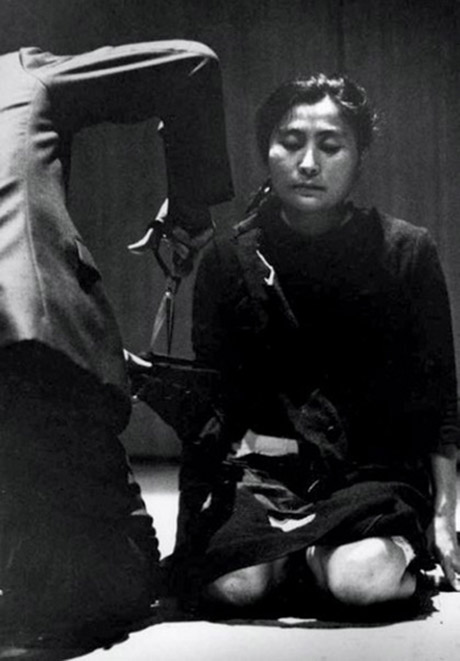
One of Yoko Ono's earliest performance works, in Cut Piece the artist presented herself and a pair of scissors to an audience of viewers in a Japanese concert hall in Kyoto. Ono knelt on the floor in front of the audience, wearing her best suit, and invited members of the audience to approach her and use the scissors to cut and take a small piece of her clothing. While many viewers snipped only a small piece of fabric the hem of the artist's clothing, others took bolder, more aggressive actions, slicing away large patches of her clothing or snipping her bra straps.
By inviting viewers to participate in the performance, Ono challenged the perceived neutrality of the interaction between viewer and art object, implicating the viewer in the potentially violent act of undressing her body. While the work was not created to explicitly address sexual assault or gendered violence, the work tacitly referenced the historic objectification of the female nude in art, and related issues of voyeurism, gender subordination, and the violation of women's personal space and boundaries.
3. Sierra DeMulder
Sierra DeMulder, Paper Dolls, 2016
A University of Minnesota alumni and Minneapolis resident, Sierra DeMulder is an internationally touring performance poet and educator, a two-time National Poetry Slam champion, and a thrice-published author.
DeMulder's poetry is the embodiment of radical vulnerability, giving voice to difficult issues like suicide, sexual violence, and abusive relationship. Her 2016 poem, Paper Dolls, pushes back the narrative too often placed on vocal survivors of sexual violence, which paints survivors as victims, as forever defined by their trauma and in need of saving.
4. Luzene Hill
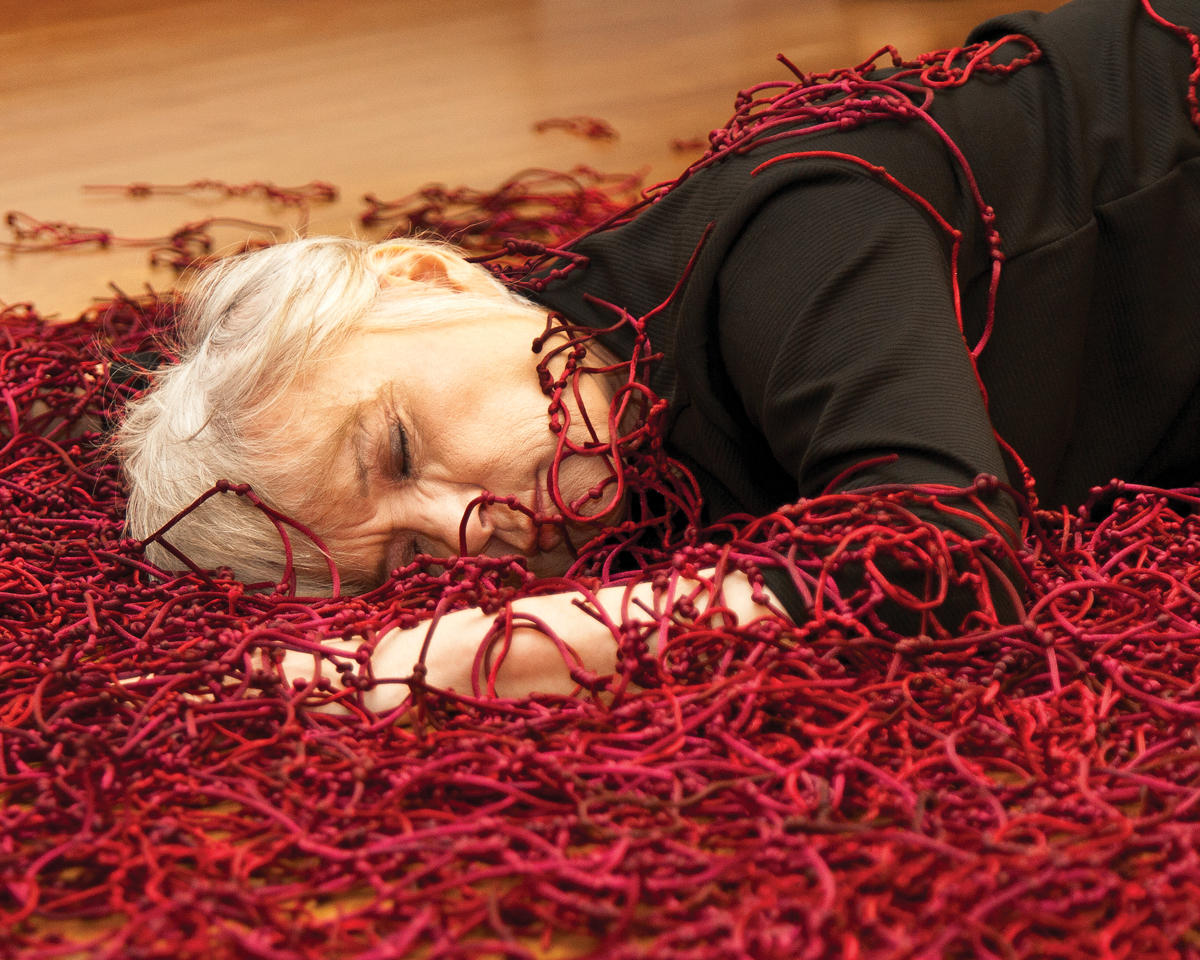
In Retracing the Trace, Cherokee artist Luzene Hill visually represents the number of rapes that go unreported in the United States in every 24 hours: 3,780. Her performance installation begins with the artist lying on the floor in the center of the gallery, her arms and legs bent, as 3,780 red khipu style Incan knots are poured over her. She then rises, leaving behind an imprint of her body, similar to the one left in the park where she was assaulted in 1994. After rising from the gallery floor, the artist proceeds to spend the next 60 hours individually pinning each knot to the walls, slowing forming a red ring around the room. For Hill, it is important to touch, recognize and account for each knot, she describes this process as "the gradual removing of a violent trace, into a reckoning,"
Using the traditional khipu style of knotting and dying cord, Hill draws a connection between the silencing of survivors of sexual violence and the silencing of Native voice and culture. For Native women, the occurrence of sexual violence is nearly 3 times greater than the national average, with almost 90 percent of assaults perpetrated by non-Native men.
5. Lady Skollie
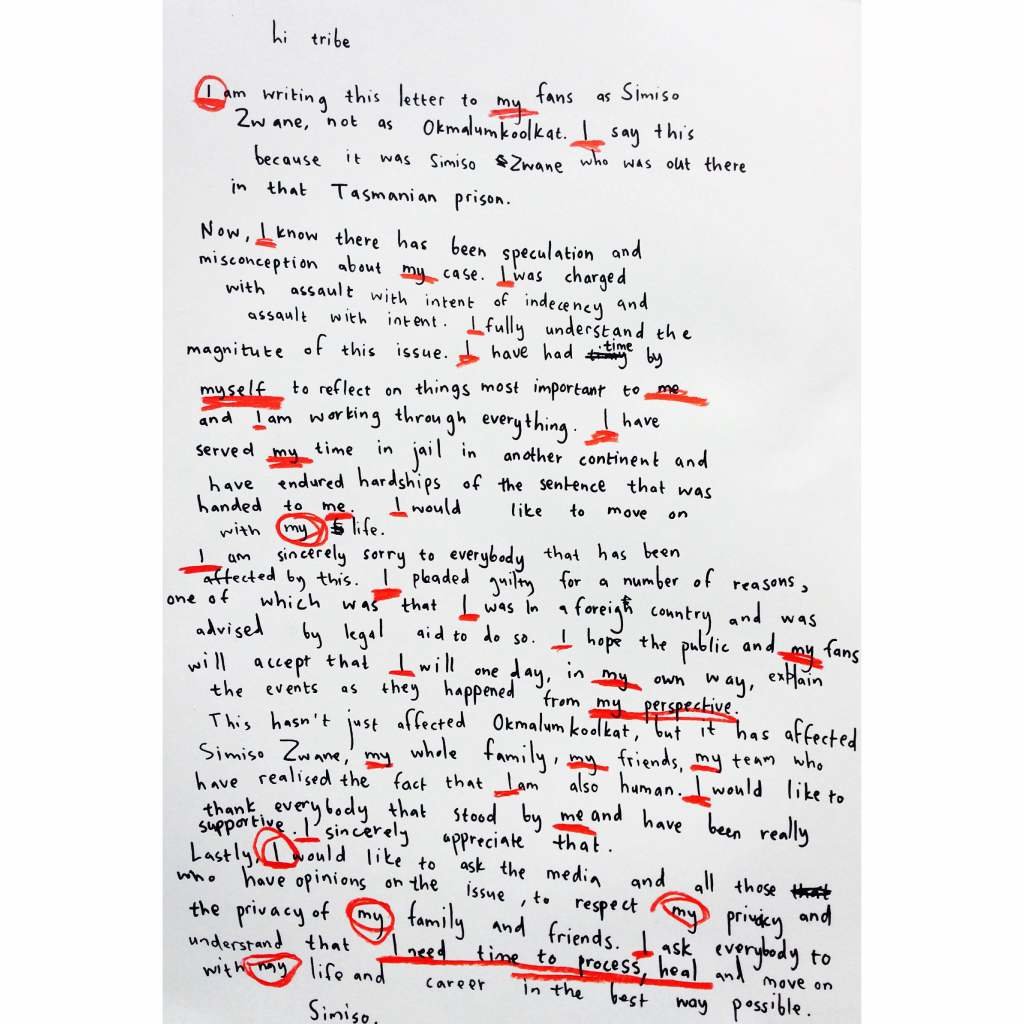
When South African rapper, Okmalumkoolkat, returned to South Africa after serving a 1 month prison sentence in Tazmania for assaulting colleague while on tour, he released the above statement (text written in black) as an open letter to his fans. The statement, which centers his experiences and hardships and need for healing and fails to mention the survivor of his crime, was quickly taken to task by South African artist Lady Skollie. Skollie created this work in response, addressing the way the "needs" and "potential" of perpetrators of sexual violence are often prioritized above survivors of the crime.
6. Frizz Kid
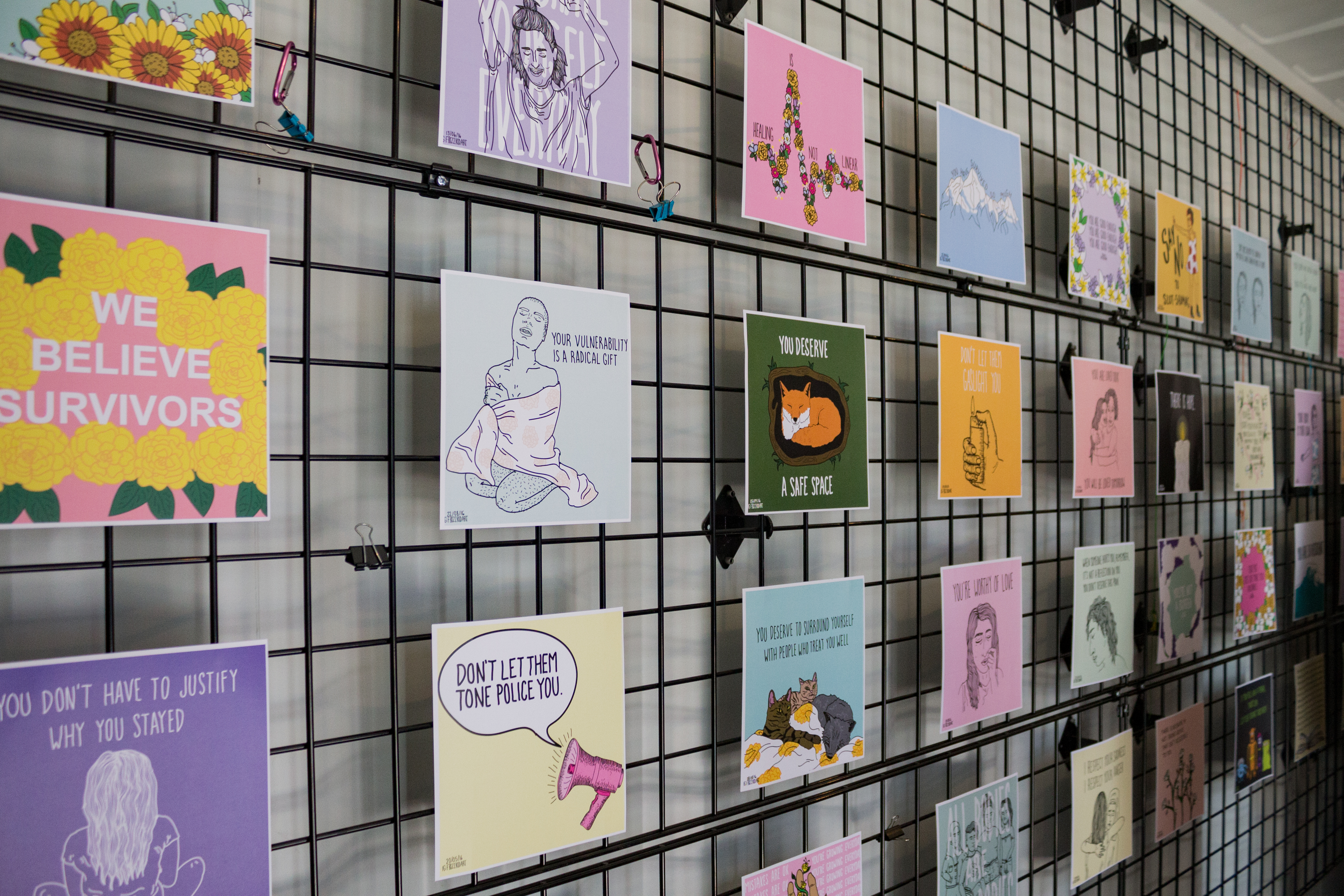
Hana Shafi, also known as Frizz Kid, is a 23 year old, Toronto based artist who uses the visual language of internet illustrations and memes to send positive affirmations and important messages into the world. In 2016, Shafi hosted the Lost Words Project in which she lead participants in creating visual messages containing words lost in sexual violence. She prompted participants to create three different posters - one containing lost words to the person who sexually assaulted you, the next containing lost words to your peers, professors, or bystanders, and the third containing lost words to yourself. Centering and prioritizing the voices of non-binary survivors and survivors of color, Frizz Kid draws attention to the way these voices are often excluded from conversations around sexual violence and the erasure that contributes to the "losing" of words.
7. Jenny Nijenhuis and Nondumiso Msimanga
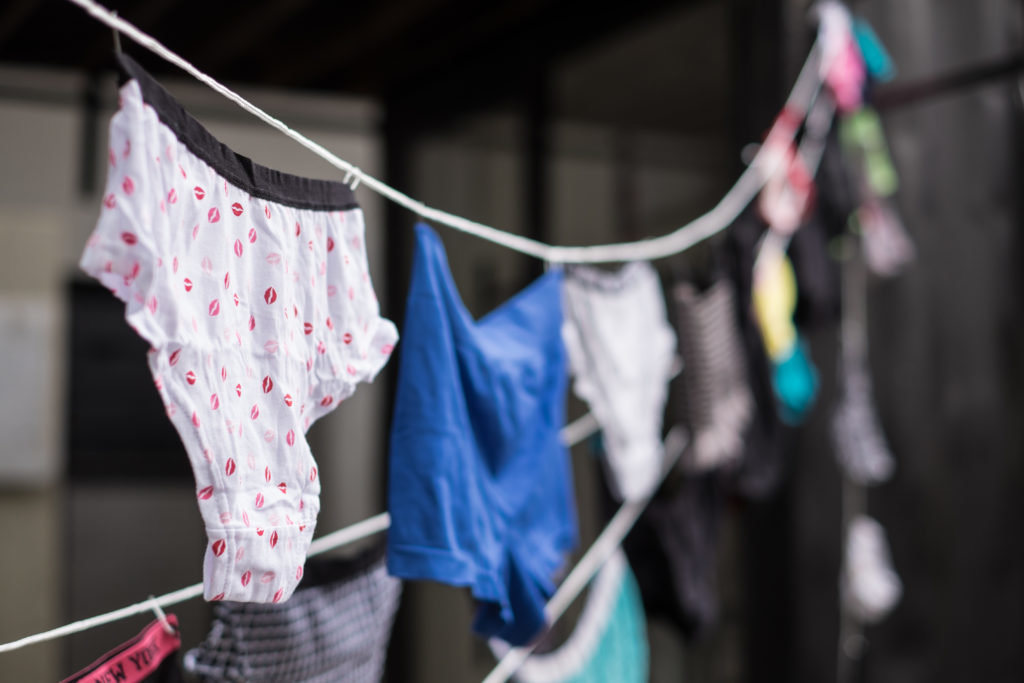
In November of 2016, South African artists Nondumiso Msimanga and Jenny Nijenhuis created this public installation with 3,600 pairs of used underwear and nearly 4,000 feet of washing line. The underwear, which hung above the streets of Johannesburg represented the 3,600 rapes estimated to take place in South Africa everyday. The artists collected the featured underwear by women wanting to come forward with their own stories of rape and sexual assault. By bringing these intimate articles of clothing into the public streets of Johannesburg, the artists sought to start a public dialogue around the epidemic of sexual violence in South Africa.

